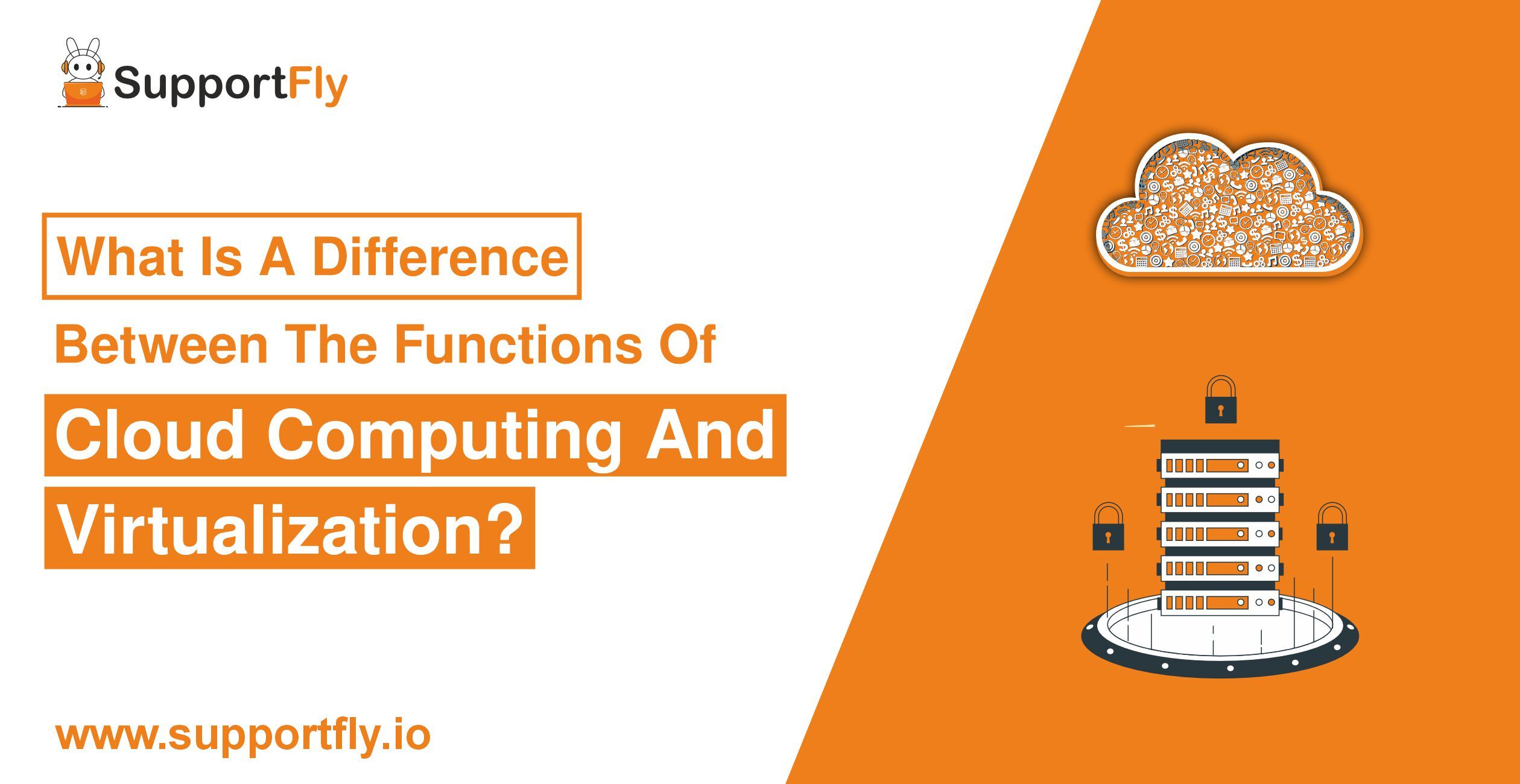Difference Between The Functions Of Cloud Computing And Virtualization
 SupportFly
SupportFly
Today, Technology is evolving at an unparalleled pace, transforming how businesses operate and manage their IT resources. Among the key innovations, cloud computing and virtualization are two key concepts but confusing due to their overlapped functionalities. However, understanding the difference between these two technologies is important for making informed decisions about IT infrastructures and strategies.
In this comprehensive article we are going to cover what Cloud computing and Virtualization is, what key benefits of cloud computing and virtualization are, what are their use cases and key differences between Cloud Computing and Virtualization.
What is Cloud Computing?
Cloud computing is all about the delivery of computing services such as servers, storage, databases, networking, software, and analytics over the internet meant to be cloud. This model allows on-demand access to services and resources, neglecting the need for physical hardwares and resources, offering significant flexibility and scalability to the users. Cloud computing is widely used across various industries including Healthcare, Finance, Education and more.
Cloud computing evoluted traditional data centers, driven by the need for more efficient resource management and larger accessibility. Services are typically categorized into three main types:
Infrastructure-as-a-Service (IaaS): It Provides virtualized computing resources over the internet.
Platform-as-a-Service (PaaS): It offers hardware and software tools over the internet.
Software-as-a-Service (SaaS): It delivers software applications over the internet on a subscription basis.
Benefits of Cloud Computing
Accessibility Features
Cloud computing allows users to access applications and data from anywhere, any time, using any device whether mobile or computer through an internet connection. This level of accessibility supports remote work and global collaboration.
Maintenance
Cloud computing services provider is responsible for maintaining and updating the infrastructure, reducing the workload on IT teams and ensuring that the latest technologies are always in use.
Collaboration
Cloud services offer collaboration features by providing shared platforms where team members can work together in real time, regardless of their physical location.
What is Virtualization?
Virtualization involves creating a virtual version of something like an operating system, server, storage, or network resources. This technology lets a single physical device function as multiple logical and virtual resources, maximizing the utilization and efficiency of physical hardware. Virtualization has several use cases such as in the IT industry for software development and disaster recovery solutions.
The concept of Virtualization in the 1960s with the development of virtual machines (VMs) by IBM. Today, virtualization is implemented in several forms, including-
Server virtualization: Dividing a physical server into smaller virtual servers.
Storage virtualization: Pooling physical storage from multiple devices to appear as a single storage device.
Network virtualization: Combining hardware and software network resources into a single software based administrative entity.
Benefits of Virtualization
Resource Efficiency
Virtualization maximizes the use of physical hardware, allowing multiple virtual machines to run on a single physical machine. This reduces hardware costs and increases efficiency.
Backup and Recovery
Virtualization offers strong disaster recovery features allowing entire virtual machines to be backed up and restored quickly. This minimizes downtime and data losses in case of hardware failures.
Testing and Development
Virtual environments are ideal for testing and development purposes. Developers can create multiple isolated environments for testing without requiring additional physical hardware.
Key Differences Between Cloud Computing and Virtualization
In spite of their similarities, cloud computing and virtualization are significantly different in some of the aspects, such as:
Cloud Computing vs. Virtualization: Infrastructure
Cloud computing depends on a network of remote servers hosted on the internet (cloud) to store, manage, and process data. These servers are located at various locations in the world, offering global access to services.
Whereas, virtualization typically occurs on-site or within a specific data center. It involves creating virtual instances on physical hardware, allowing for better resource management within a local environment.
Cloud Computing vs. Virtualization: Cost
Cloud computing has a subscription based pricing model that allows businesses to pay for only what they use. This model reduces the need for significant upfront investment in hardware and infrastructure.
However, Virtualization may need significant initial investment in physical hardware and software licenses. Over time, virtualization can reduce costs by improving hardware utilization and efficiency.
Cloud Computing vs. Virtualization: Scalability
Scalability is a key advantage of Cloud Computing. Business users can easily scale up and down depending on the demand without worrying about the underlying hardware limitations.
Virtualization also offers scalability but within the constraints of the physical hardware. Adding more virtual instances often requires additional physical resources.
Cloud Computing vs. Virtualization: Flexibility
Cloud computing provides unparalleled flexibility, enabling access to services and resources from anywhere with an internet connection. This is particularly beneficial for remote work and global operations.
Virtualization offers flexibility in managing and deploying resources but is limited to the physical location of the hardware. Remote access is possible but may require additional configuration.
Cloud Computing vs. Virtualization: Security
Security in cloud computing is managed by the service provider, which includes measures such as encryption, firewalls, and access controls. However, reliance on third-party providers can raise concerns about data privacy and control.
In virtualization, security is often managed internally, giving organizations more control over their data and infrastructure. However, this also means that the responsibility for implementing robust security measures falls on the organization.
Conclusion
Understanding Cloud computing and virtualization in a comprehensive way, the differences between cloud computing and virtualization is crucial for businesses looking to optimize their IT infrastructure. While both technologies offer significant features and benefits, they serve for different purposes and are suitable for different applications. Cloud computing provides scalable, flexible, and accessible solutions, ideal for dynamic and global operations. Virtualization, on the other hand, offers efficient resource management and robust disaster recovery options, making it perfect for on-site and controlled environments.
You can reach us for managed cloud services and all types of Server Virtualization management services.
Subscribe to my newsletter
Read articles from SupportFly directly inside your inbox. Subscribe to the newsletter, and don't miss out.
Written by
